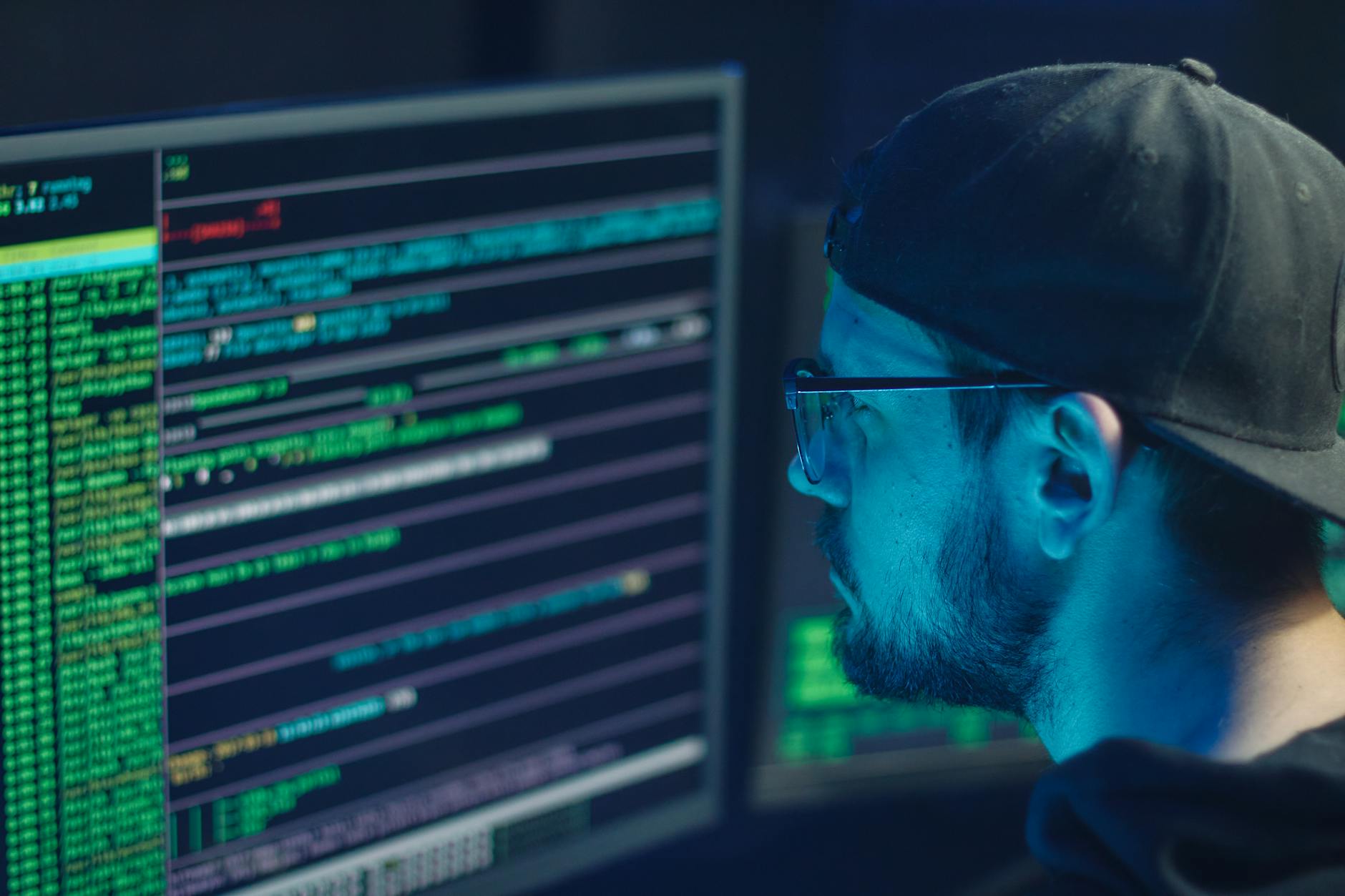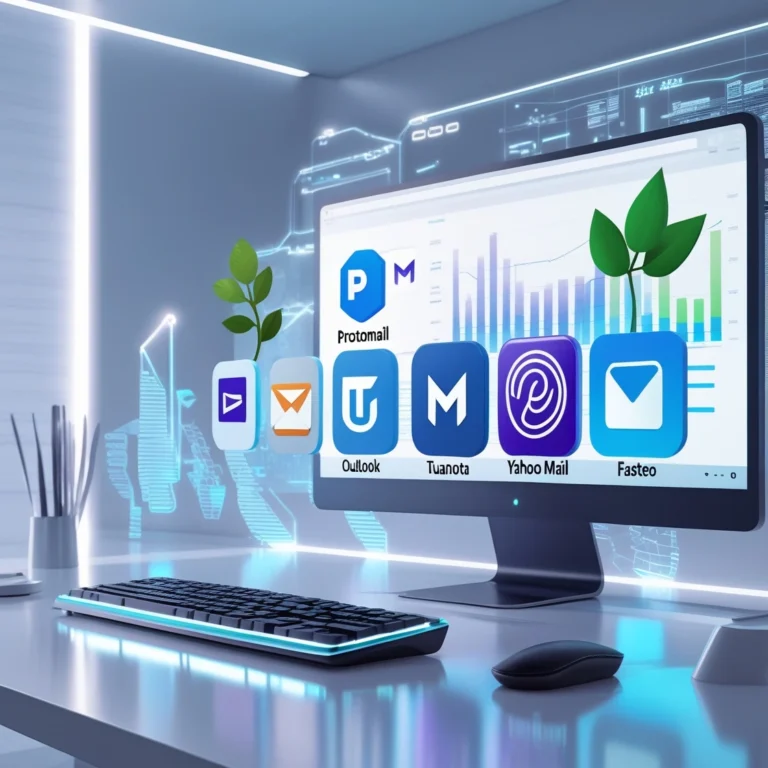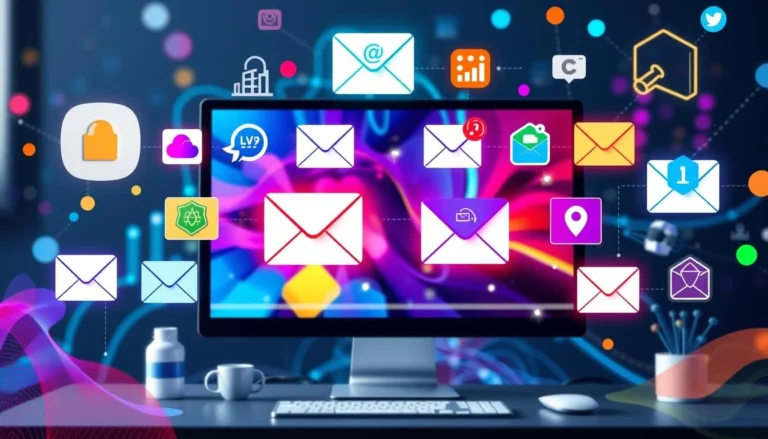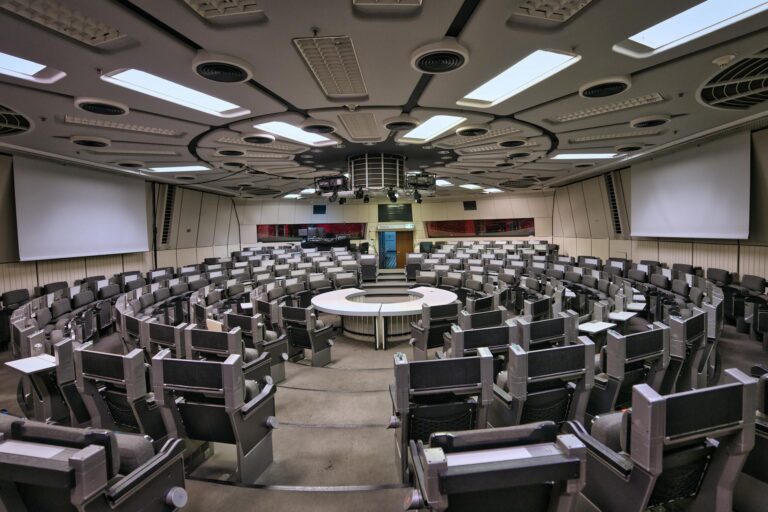Mastering 2025 Tech Trends for Business Success
The Digital Frontier: Unlocking Business Potential with 2025 Tech Trends
Estimated reading time: 17 minutes
Key Takeaways
- The year 2025 will see transformative tech trends, with pervasive AI automation, advanced web and mobile development, optimized cloud/DevOps, and human-centric UI/UX driving unprecedented business growth and efficiency.
- Web development is shifting towards AI-powered, hyper-personalized web apps and high-performance frameworks like Next.js, along with composable architectures (headless CMS, micro frontends) for scalability.
- Mobile app development will extend beyond smartphones to integrate with pervasive AI (smart glasses) and leverage cross-platform efficiency with Flutter and React Native for immersive experiences.
- Cloud computing and DevOps are crucial, focusing on strategic multi-cloud adoption, serverless architecture for efficiency, and CI/CD automation, alongside FinOps for cost optimization.
- AI automation, exemplified by advanced chatbots, n8n workflow development, and AI in content creation, empowers businesses with intelligent delegation, significantly reducing costs and improving operational efficiency.
Table of Contents
- The Digital Frontier: Unlocking Business Potential with 2025 Tech Trends
- The Dawn of 2025: A Digital Renaissance
- Web Development Trends 2025: Building the Future of the Internet
- Mobile App Development 2025: Beyond the Smartphone
- Cloud Computing and DevOps: The Engine of Modern Tech Stacks
- AI Automation for Businesses: Intelligent Delegation in Action
- Modern UI/UX Design: Crafting Seamless Digital Journeys
- Digital Transformation Strategies and Enterprise Digital Adoption
- The AITechScope Advantage: Navigating 2025 with Intelligent Automation
- Frequently Asked Questions (FAQs)
- Conclusion
The year 2025 stands on the precipice of a digital revolution, where technological advancements are not merely incremental but transformative. Businesses, irrespective of size or industry, face a landscape redefined by an unprecedented confluence of innovation. From intelligent web experiences and immersive mobile applications to robust cloud infrastructure and pervasive AI automation, the opportunities for growth, efficiency, and competitive advantage have never been greater. This comprehensive guide serves as your strategic playbook, dissecting the 2025 tech trends that will shape the coming year, offering a roadmap for navigating this dynamic environment and leveraging the power of technology to achieve remarkable outcomes.
For those eager to stay ahead, understanding these shifts is not just an advantage—it’s a necessity. This article will break down complex concepts into actionable insights, showing how today’s tech can accelerate growth, improve performance, and fundamentally transform operations. At AITechScope, we believe in empowering businesses to harness this potential, specializing in AI-powered automation and intelligent delegation to scale operations, reduce costs, and dramatically improve efficiency. Let’s delve into the digital renaissance awaiting us.
The Dawn of 2025: A Digital Renaissance
The digital world in 2025 is characterized by a blend of sophisticated automation, heightened user expectations, and an imperative for sustainable, resilient operations. Businesses are no longer just adopting technology; they are integrating it at the very core of their strategic vision, embarking on profound digital transformation strategies that touch every facet of their operations.
Redefining Business in a Tech-Driven Landscape
Digital transformation is no longer a buzzword; it’s a continuous journey that accelerates with each passing year. In 2025, this journey is defined by a shift from merely digitizing existing processes to fundamentally reimagining how businesses operate, interact with customers, and innovate their offerings. Companies are seeking not just efficiency but intelligence, leveraging data and AI to make smarter decisions and create more personalized experiences.
The Core Pillars of Tech Innovation for 2025
Several key areas form the bedrock of this technological shift, each interdependent and collectively driving the future of business:
- Pervasive AI and Automation: AI moves beyond niche applications to become an integral part of daily workflows, customer interactions, and strategic decision-making. AI automation for businesses is key to unlocking new levels of productivity.
- Evolving Web Development: The web continues its evolution towards more dynamic, personalized, and performant experiences, powered by advanced frameworks and AI integrations.
- Mobile-First, AI-Enhanced Experiences: Mobile applications become even smarter, more intuitive, and seamlessly integrated into our lives, driven by robust cross-platform solutions and cutting-edge UI.
- Optimized Cloud & DevOps: Cloud infrastructure becomes more intelligent, cost-efficient, and resilient, while DevOps practices mature to enable faster, more reliable software delivery for teams of all sizes.
- Human-Centric UI/UX Design: User interfaces and experiences prioritize accessibility, emotional connection, and hyper-personalization, ensuring technology serves human needs effectively.
These pillars collectively constitute the software development 2025 landscape, demanding a holistic approach to technological adoption and innovation.
Web Development Trends 2025: Building the Future of the Internet
The internet remains the primary battleground for customer engagement and business growth. In 2025, web development trends are pushing boundaries to create faster, smarter, and more engaging digital experiences.
The Rise of AI-Powered Web Apps
One of the most exciting 2025 tech trends in web development is the deep integration of artificial intelligence. AI-powered web apps are moving beyond simple chatbots to offer truly intelligent, adaptive experiences:
- Hyper-Personalization: AI algorithms analyze user behavior, preferences, and real-time context to deliver tailored content, product recommendations, and user journeys. This can range from dynamic page layouts based on a user’s browsing history to personalized pricing or promotions.
- Generative AI for Content Creation: Tools like ElevenLabs, which by early 2025 began enabling authors to publish AI-generated audiobooks on its own platform, illustrate the growing capability of AI in content creation. This extends to web development, where AI can assist in generating copy, imagery, and even code snippets, streamlining the development process and enriching content dynamically.
- Intelligent Search and Discovery: Enhanced search capabilities, powered by natural language processing (NLP) and machine learning, allow users to find information more intuitively, moving beyond keyword matching to understanding intent.
- Predictive UX: AI anticipates user needs and actions, proactively suggesting features, pre-filling forms, or guiding users through complex workflows, leading to significantly smoother interactions.
Performance and User Experience at the Forefront
Speed and responsiveness are no longer luxuries; they are fundamental expectations. In 2025, performance optimization techniques are paramount, with frameworks like Next.js leading the charge.
- Next.js and React Performance: Next.js, a React framework, continues to dominate for its ability to deliver lightning-fast, SEO-friendly web applications. Features like server-side rendering (SSR), static site generation (SSG), and incremental static regeneration (ISR) are crucial for optimizing initial load times and subsequent navigation. For businesses, this translates directly to higher conversion rates and improved search engine rankings.
- “Next.js for Small Businesses: Build a Fast Marketing Site in One Weekend” highlights its efficiency. It enables rapid development of high-performance marketing sites, crucial for quick market entry and strong online presence.
- Next.js small business site development is often a key strategy for companies looking to establish a strong online presence without extensive development cycles.
- A Next.js beginner guide often emphasizes its opinionated structure, which simplifies setup and deployment, making it accessible even for teams new to the framework.
- Implementing a fast marketing site Next.js ensures that critical business information loads instantly, improving user engagement and reducing bounce rates.
- React Performance Fixes: Beyond Next.js, general React applications benefit from targeted optimizations such as memoization (React.memo, useMemo, useCallback), lazy loading components, virtualized lists for large data sets, and efficient state management. These techniques directly reduce page load by seconds, as demonstrated by case studies showing 60% page load reductions.
Composable Architectures: Headless CMS and Micro Frontends
The monolithic application is giving way to more flexible, scalable, and maintainable architectures.
- Headless CMS WordPress: WordPress, when used as a headless CMS WordPress, provides a robust backend for content management while allowing developers to build custom frontends using modern frameworks like React or Next.js. This decouples the content from its presentation, offering greater flexibility, improved performance, and multi-channel content delivery. It also allows for WordPress without the bloat: lightweight plugins that actually help SEO.
- Microservices Architecture: While commonly associated with backend systems, the principles of microservices are extending to the frontend with micro frontends. This approach breaks down complex UIs into smaller, independently deployable units, improving team autonomy, scalability, and the ability to update parts of an application without affecting the whole. However, it’s essential to understand “Micro Frontends: When They Help and When They Hurt (Practical Examples)” to avoid unnecessary complexity.
Designing for Everyone: Modern UI/UX Design and Responsive UI
User experience remains paramount. In 2025, modern UI/UX design principles emphasize inclusivity, delight, and intuitive interaction across all devices.
- Responsive UI Design: Beyond mobile-first, responsive design evolves to be truly adaptive, considering diverse screen sizes, input methods, and user contexts. This includes considerations for foldables, large format displays, and even smart devices beyond traditional screens.
- Accessibility as a Core Feature: Building accessible experiences is no longer an afterthought but a fundamental requirement. This includes thoughtful color contrast, keyboard navigation, screen reader compatibility, and clear semantic HTML. As highlighted in “Designing Accessible Buttons: A Non-Designer’s Guide (Figma Tips),” even small details matter for creating inclusive interfaces.
Mobile App Development 2025: Beyond the Smartphone
Mobile applications continue to be a cornerstone of digital interaction, evolving rapidly to integrate AI, offer richer experiences, and adapt to emerging form factors beyond the traditional smartphone. Mobile app development 2025 is characterized by intelligence, immersion, and cross-platform efficiency.
The Great Framework Debate: Flutter vs React Native in 2025
For startups and enterprises alike, choosing the right cross-platform framework is a critical decision. The debate between Flutter and React Native continues, with both making significant advancements.
- Flutter vs React Native 2025: Both frameworks offer compelling advantages for building native-like experiences from a single codebase.
- Flutter, backed by Google, offers excellent performance due to its compiled nature and direct control over pixels. Its “Build a Simple Cross-Platform App with Flutter: From Idea to Play Store” approach emphasizes rapid development and beautiful, custom UIs.
- React Native, leveraging JavaScript/TypeScript, benefits from a vast ecosystem and developer community. It allows for code reuse with web projects (React), which can be a significant advantage for teams familiar with web development.
- Which Mobile Framework for Startups? The choice often boils down to team expertise, desired performance characteristics, and specific UI/UX needs. Flutter might be favored for highly custom UIs and maximum performance, while React Native could be the choice for teams already proficient in React and looking for maximum code reuse. Both are strong contenders for startups aiming to launch quickly and efficiently.
Pervasive AI in Mobile Experiences
Mobile apps are becoming primary conduits for AI interaction.
- AI Smart Glasses and Always-On AI: The emergence of devices like the “always-on” AI smart glasses, being launched by Harvard dropouts in mid-2025, signals a shift towards pervasive AI in personal devices. While raising privacy concerns, these devices highlight how mobile AI will move beyond the phone screen, offering real-time information, assistance, and contextual awareness. Mobile apps will need to integrate with these new form factors, processing data from ambient sensors and providing intelligent overlays or audio feedback.
- Personalized and Predictive Apps: Similar to web apps, mobile applications will increasingly leverage AI for hyper-personalization, offering content, services, and notifications tailored to individual user behavior, location, and even emotional state. Predictive features will anticipate needs, from suggesting the fastest route based on calendar events to recommending products before a user even searches.
Mobile App UI Trends and Immersive Experiences
Mobile app UI trends for 2025 focus on enhancing immersion and natural interaction.
- Augmented Reality (AR) and Virtual Reality (VR) Integration: AR capabilities, already prevalent in many apps, will become more sophisticated, offering practical utilities in retail, education, and navigation. VR, while still niche for mobile, will see increased experimentation in gaming and immersive content consumption.
- Haptic Feedback and Intuitive Gestures: Advanced haptics provide richer tactile feedback, making interactions feel more responsive and natural. Gesture-based navigation will become even more refined, reducing reliance on physical buttons and screen taps.
- Adaptive Interfaces: Mobile UIs will dynamically adjust based on device orientation, user context (e.g., driving vs. walking), and even environmental factors, ensuring an optimal experience in any situation.
Edge Computing and Offline Capabilities
With AI processing increasing on devices, edge computing for mobile apps becomes critical. Processing data locally reduces latency, enhances privacy, and allows for robust offline capabilities, ensuring apps remain functional and responsive even without a constant internet connection. This is crucial for applications in remote areas or those demanding real-time responses.
Cloud Computing and DevOps: The Engine of Modern Tech Stacks
The backbone of virtually all modern digital initiatives, cloud computing and DevOps practices are becoming more sophisticated, automated, and cost-aware in 2025. This section explores how organizations are optimizing their infrastructure and delivery pipelines to achieve agility and resilience.
Strategic Cloud Migration and Multi-Cloud Environments
As businesses mature in their cloud adoption, a more strategic approach to migration and architecture emerges.
- Cloud Migration Strategy: Moving legacy applications to the cloud requires careful planning and execution. “How to Move Your Legacy App to the Cloud Without Breaking It” emphasizes incremental approaches, containerization, and re-platforming over a simple lift-and-shift. The focus shifts to optimizing applications for cloud-native benefits rather than just hosting them in the cloud.
- Multi-Cloud and Hybrid Cloud: Many enterprises are adopting multi-cloud architecture to avoid vendor lock-in, enhance resilience, and leverage specialized services from different providers. Hybrid cloud solutions, integrating on-premises infrastructure with public clouds, remain vital for businesses with specific data residency or regulatory requirements.
Serverless Architecture: Efficiency and Scalability for Startups
Serverless architecture continues its ascent, offering unparalleled benefits for cost efficiency and scalability, especially for nascent businesses.
- Serverless AWS Cost Example: “Serverless on AWS: Create a Cost-Efficient Backend That Scales Automatically” illustrates how services like AWS Lambda, API Gateway, and DynamoDB allow businesses to pay only for the compute resources they consume. This drastically reduces operational overhead and capital expenditure compared to managing traditional servers, making it incredibly attractive.
- Serverless Backend for Startups: For startups, serverless offers a pathway to rapid prototyping and deployment with minimal infrastructure management. It enables them to focus on core product development, confident that their backend can scale seamlessly from a few users to millions without significant re-architecture or ongoing operational burden.
DevOps Best Practices and CI/CD Automation for Small Teams
DevOps principles are no longer exclusive to large enterprises. In 2025, small and medium-sized businesses are embracing DevOps best practices to streamline their development workflows.
- CI/CD Automation: Continuous Integration (CI) and Continuous Delivery (CD) pipelines are essential for accelerating software releases and ensuring quality. “CI/CD for Small Teams: Automated Deployments Without the Headache” provides practical guidance, emphasizing simplicity and efficiency.
- GitHub Actions Deploy Tutorial: Tools like GitHub Actions make CI/CD automation accessible even for small teams. A GitHub Actions deploy tutorial can quickly show how to set up automated tests, builds, and deployments directly from a code repository, integrating seamlessly into the development lifecycle. This minimizes manual errors, speeds up feedback loops, and allows developers to focus on coding.
FinOps and Cloud Cost Optimization
As cloud spending grows, FinOps (Cloud Financial Operations) becomes a critical discipline. In 2025, organizations will increasingly focus on optimizing cloud spend through:
- Resource Management: Identifying and right-sizing unused or underutilized resources.
- Reserved Instances and Savings Plans: Strategic purchasing models to reduce compute costs.
- Cost Visibility and Governance: Implementing tools and processes to track, analyze, and allocate cloud costs, ensuring accountability and preventing bill shock.
AI Automation for Businesses: Intelligent Delegation in Action
Artificial Intelligence is no longer a futuristic concept; it’s a practical tool driving efficiency, innovation, and strategic decision-making across all business functions. AI automation for businesses is the core driver of the intelligent enterprise in 2025.
Chatbot Automation and AI Chatbots for Customer Service
AI-powered conversational interfaces are revolutionizing customer interactions and internal support.
- AI Chatbots for Customer Service: Modern chatbots, powered by advanced NLP and machine learning, can handle complex queries, provide personalized assistance, and even process transactions. “How Small Businesses Use Chatbots to Save Time: Real Workflows That Work” showcases how these tools can offload routine inquiries, allowing human agents to focus on high-value interactions.
- Workflow Automation Tools: Chatbots are increasingly integrated with broader workflow automation tools to provide seamless service. For example, a chatbot might collect customer information and then trigger an automated workflow to create a support ticket, dispatch a service request, or even process a refund. This integration enhances efficiency and customer satisfaction.
Workflow Automation Tools and n8n Development
The true power of AI automation lies in its ability to connect disparate systems and automate complex multi-step processes.
- Automate Repetitive Tasks with No-Code Tools + AI: As highlighted in “Automate Repetitive Tasks with No-Code Tools + AI (Save 5–10 Hours/Week),” these tools empower non-technical users to build sophisticated automations. This is where AITechScope excels.
- n8n Workflow Development: AITechScope specializes in n8n workflow development, a powerful open-source workflow automation tool. n8n enables businesses to connect various applications (CRMs, ERPs, marketing platforms, custom internal tools) and orchestrate intricate automated workflows, often involving AI services. This intelligent delegation drastically reduces manual effort, improves data accuracy, and frees up valuable human resources to focus on strategic initiatives, directly addressing the challenge of scaling operations and reducing costs.
AI in Content Creation and Publishing
AI’s role in creative fields is rapidly expanding, as evidenced by real-world applications.
- ElevenLabs & AI Audiobooks: The announcement from ElevenLabs in early 2025 about allowing authors to create and publish AI-generated audiobooks on their platform is a landmark example. This demonstrates how AI can democratize content creation, making audiobooks more accessible and reducing production costs. For businesses, this translates to leveraging AI for marketing copy, personalized customer communications, voiceovers, and dynamic content generation, enhancing outreach and engagement.
Predictive Analytics and Business Intelligence
AI’s ability to analyze vast datasets and identify patterns empowers businesses to make data-driven decisions.
- Predictive Analytics: AI models can forecast market trends, predict customer churn, optimize inventory levels, and anticipate maintenance needs for equipment. This proactive approach allows businesses to mitigate risks and seize opportunities before they fully materialize.
- Enhanced Business Intelligence: AI tools provide more intuitive and interactive dashboards, generating insights from complex data sets that might otherwise be overlooked, supporting strategic planning and operational improvements.
Ethical AI and Responsible Implementation
As AI becomes more pervasive, the ethical considerations surrounding its use grow in importance.
- AI Smart Glasses Privacy Concerns: The “always-on” AI smart glasses, while innovative, immediately raise red flags regarding privacy and data security. Businesses deploying AI-powered solutions must prioritize transparency, obtain informed consent, and implement robust data protection measures.
- AI Stop Sign Cameras Ethical Considerations: Obvio’s AI cameras for rooting out unsafe drivers illustrate AI’s potential for public safety but also highlight the need for careful consideration of bias, surveillance implications, and accountability. Businesses must ensure their AI systems are fair, unbiased, and operate within ethical guidelines, particularly when dealing with sensitive data or public-facing applications.
Modern UI/UX Design: Crafting Seamless Digital Journeys
User experience is the ultimate differentiator. In 2025, modern UI/UX design goes beyond aesthetics, focusing on intuitive interactions, personalization, and universal accessibility.
Hyper-Personalization and Adaptive Interfaces
- Dynamic Experiences: Interfaces will become even more adaptive, dynamically adjusting layouts, content, and functionalities based on individual user profiles, past interactions, location, and even emotional states. This moves beyond basic personalization to truly anticipate and cater to individual needs.
- Contextual Awareness: UI/UX will increasingly leverage contextual data (device, time of day, environment) to present the most relevant information and functionality, minimizing cognitive load and maximizing efficiency.
Accessibility as a Core Principle
- Designing Accessible Buttons: As highlighted by “Designing Accessible Buttons: A Non-Designer’s Guide (Figma Tips),” attention to detail in elements like color contrast, focus states, and semantic labeling is fundamental.
- Inclusive Design: Beyond compliance, inclusive design ensures that digital products are usable and enjoyable by people with the widest possible range of abilities and disabilities. This means considering diverse input methods, cognitive load, and sensory perceptions from the outset of the design process.
Emotional Design and Micro-interactions
- Emotional Connection: Designers will increasingly focus on evoking positive emotions through carefully crafted interfaces, using color, typography, animation, and micro-interactions to create delightful and memorable experiences.
- Micro-interactions: Subtle animations, sounds, and visual feedback that occur when a user interacts with an interface element (e.g., a button press, a form submission) will become more sophisticated, providing clear feedback and enhancing the overall sense of responsiveness and engagement.
AI-Assisted Design Tools
AI is starting to augment the design process itself. Tools that can suggest layouts, optimize color palettes, generate design variations, or even create basic UI components based on textual prompts will empower designers to iterate faster and focus on higher-level strategic thinking.
Digital Transformation Strategies and Enterprise Digital Adoption
For businesses to thrive in 2025, simply having technology isn’t enough; it’s about strategically integrating it to drive fundamental change and foster widespread adoption across the organization. This requires clear digital transformation strategies and focused efforts on enterprise digital adoption.
For Small Businesses: Digital Transformation on a Budget
Digital transformation is not exclusive to large corporations. Tech innovation for small businesses is crucial for survival and growth.
- “Digital Transformation on a Budget: 7 Steps Small Companies Can Start Today” provides a practical roadmap. These steps often include identifying key pain points, adopting cloud-based SaaS solutions, leveraging low-code/no-code platforms, implementing basic workflow automation, and enhancing online presence with efficient tools like Next.js small business site development.
- Small businesses can leverage AI chatbots for customer service and workflow automation tools to save significant time and resources without requiring a massive upfront investment, focusing on intelligence delegation and cost reduction.
SaaS Product Optimization and Intelligent Features
The SaaS landscape is maturing, with a renewed focus on delivering exceptional value through intelligent features.
- “Make Your SaaS Smarter: 3 Low-Effort AI Features That Delight Users” highlights how even minimal AI integration can significantly enhance a product. Examples include intelligent search, personalized recommendations, or automated task suggestions within a SaaS application.
- SaaS product optimization in 2025 will increasingly involve embedding AI to automate mundane tasks, provide predictive insights, and personalize user experiences, making applications more indispensable to businesses.
Overcoming Legacy System Challenges
Many businesses operate with legacy applications that hinder agility and innovation.
- “How to Move Your Legacy App to the Cloud Without Breaking It” offers crucial advice on migrating these systems. This often involves modernization strategies like containerization, API-first approaches, and incremental refactoring, moving towards a more flexible and scalable microservices architecture. This is a key step for digital innovation for startups who might inherit some legacy structures or for established SMBs looking to modernize.
Building a Future-Proof Tech Stack for Modern Businesses
The right tech stack for modern businesses is agile, scalable, and adaptable. It often combines:
- Frontend: Next.js, React, or Flutter/React Native for mobile.
- Backend: Serverless (AWS Lambda, Azure Functions), Node.js, Python microservices.
- Database: NoSQL (MongoDB, DynamoDB) and relational (PostgreSQL).
- Cloud: AWS, Azure, GCP for infrastructure and services.
- DevOps: CI/CD automation with tools like GitHub Actions, robust monitoring, and observability.
- AI/Automation: Integration of AI services for specific tasks, and powerful workflow automation tools like n8n.
This combination allows for continuous performance optimization techniques and ensures businesses can rapidly respond to changing market demands.
The AITechScope Advantage: Navigating 2025 with Intelligent Automation
As businesses grapple with the complexities and opportunities presented by the 2025 tech trends, a strategic partner becomes invaluable. AITechScope stands at the forefront of this transformation, empowering organizations to harness the full potential of AI and automation.
We specialize in AI-powered automation and n8n workflow development, providing virtual assistant services that go beyond mere task execution. Our solutions are designed to optimize your business processes through intelligent delegation, automating repetitive and time-consuming tasks across your entire operation.
Whether you’re a small business looking to implement chatbot automation for customer service, a startup seeking to build a serverless backend for startups, or an enterprise aiming to streamline complex workflows with CI/CD automation and advanced integrations, AITechScope offers tailored expertise. We help you scale operations efficiently, significantly reduce costs by minimizing manual labor, and dramatically improve efficiency by ensuring your systems work smarter, not harder.
By partnering with AITechScope, you’re not just adopting technology; you’re gaining a strategic advantage, transforming your business into a lean, agile, and intelligent entity ready to thrive in the digital future.
Frequently Asked Questions (FAQs)
Q1: What are the most impactful tech trends for businesses in 2025?
A1: The most impactful 2025 tech trends for businesses include the pervasive adoption of AI automation, advanced web development focused on performance (e.g., Next.js), sophisticated mobile app experiences (Flutter vs. React Native), strategic cloud computing and DevOps practices, and human-centric modern UI/UX design. These trends collectively drive digital transformation and unlock new levels of efficiency and growth.
Q2: How can small businesses leverage AI and automation without a huge budget?
A2: Small businesses can leverage AI and automation on a budget by focusing on high-impact areas. This includes implementing AI chatbots for customer service to handle routine inquiries, adopting workflow automation tools (like those built with n8n) to automate repetitive tasks, and using AI-powered web apps or low-code/no-code platforms for marketing and operational efficiency. Solutions that offer a “pay-as-you-go” model, like serverless AWS cost example architectures, can significantly reduce upfront and ongoing expenses.
Q3: Is Flutter or React Native better for mobile app development in 2025?
A3: In mobile app development 2025, both Flutter and React Native remain strong contenders. Flutter (backed by Google) often excels in performance and highly custom, beautiful UIs, making it ideal for apps requiring pixel-perfect designs. React Native (backed by Meta) benefits from a vast JavaScript ecosystem and is excellent for teams with existing React web development expertise, offering great code reuse. The “better” choice for which mobile framework for startups largely depends on your team’s existing skill set, specific app requirements, and long-term maintenance strategy.
Q4: What role does serverless architecture play in modern backend development?
A4: Serverless architecture plays a crucial role in modern backend development by enabling highly scalable, cost-efficient, and low-maintenance systems. It allows developers to deploy code without managing servers, paying only for the actual compute time consumed. This is particularly beneficial for serverless backend for startups and rapidly growing applications, offering inherent scalability and reducing operational overhead significantly, as illustrated by a typical serverless AWS cost example.
Q5: How can businesses ensure their digital transformation is successful?
A5: Successful digital transformation strategies require a holistic approach. Key elements include a clear vision aligned with business goals, strong leadership commitment, a focus on enterprise digital adoption through training and change management, strategic investment in core technologies (like cloud, AI, and modern web/mobile stacks), and continuous performance optimization techniques. It also involves choosing the right partners (like AITechScope for intelligent automation) and a willingness to adapt and iterate based on feedback and evolving tech trends.
Conclusion
The digital landscape of 2025 is rich with opportunity, presenting a future where technology is deeply embedded in every facet of business operations and customer experiences. From the hyper-personalized interactions driven by AI-powered web apps and intelligent mobile experiences to the scalable foundations laid by cloud computing and DevOps, and the intuitive interfaces crafted by modern UI/UX design, the pathway to unprecedented growth is clear.
Embracing these 2025 tech trends is not merely an option but a strategic imperative. Businesses that intelligently adopt AI automation for businesses, optimize their web development trends with frameworks like Next.js, and make informed choices in mobile app development 2025 will be the ones that thrive. The focus must be on efficiency, innovation, and a human-centric approach to technology.
AITechScope is your dedicated partner in navigating this exciting future. With our expertise in AI-powered automation, n8n workflow development, and intelligent delegation, we empower businesses to unlock new levels of efficiency, reduce costs, and scale operations seamlessly. Let us help you transform complex challenges into competitive advantages, ensuring your business is not just participating in the digital future, but leading it.
Ready to transform your business with cutting-edge AI automation and intelligent delegation? Visit AITechScope today to discover how we can help you accelerate growth, improve performance, and redefine efficiency in 2025 and beyond.






